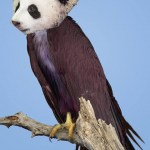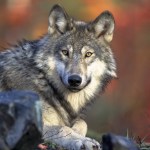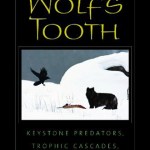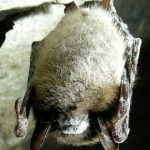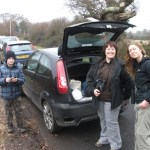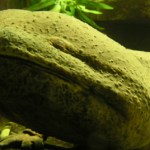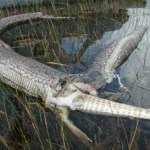conservation
People were fascinated, excited, and some were enraged, by this awareness raising campaign of BirdLife South Africa.
I might have preferred this modification:
by Peter Gleick and Heather Cooley
Debates about water in California, the western U.S., and indeed, worldwide, have traditionally focused on the question of how best to further expand water supply to meet some hypothetical future increase in water demand. And the solution frequently offered is to build massive new infrastructure in the form of dams and reservoirs, drill more groundwater wells, or expand water diversions from ever-more-distant rivers, in order to “grow” the supply available for human use.
“Build more traditional water infrastructure” is increasingly the wrong answer to the…
Guest Post: Matthew Heberger Pacific Institute, Oakland, California
New monthly water use data for California water utilities shows that residential water use varies widely around the state, and that the response to the drought has been uneven. Moreover, in some areas, residential use averages more than 500 gallons per person per day, indicating that we could be doing much more to save water.
In July, the State Water Resources Control Board, or the Water Board, issued an emergency regulation to increase water conservation in urban areas. The new regulations prohibit certain water uses, like…
Conservationists are trying hard to save the Devils Hole pupfish (Cyprinodon diabolis) from extinction. With less than 100 animals remaining, a captive breeding program was started at the University of California, Berkeley.
As you can imagine from the image below, the geographic range of this fish is smaller than other wild vertebrates. They are only found in the limestone caverns of the geothermal Devils Hole pool in Death Valley, Nevada. The pool is 3m wide, 20m long, 426 feet deep, and a very warm 92-93 degrees Fahrenheit. It is thought to have formed more than 500,000 years ago…
Image of Canis lupus by Gary Kramer, from US Fish & Wildlife Service.
Researchers have designed a computer program that can identify an individual wolf in the wild analyzing the frequency and amplitude of their howls. They were able to accurately identify an individual Eastern grey wolf (Canis lupus lycaon) with 97% accuracy using the program. This program is expected to be highly useful to wolf biologists and conservationists.
This program would certainly make camping more entertaining as well.
Source:
Root-Gutteridge H, Bencsik M, Chebli M, Gentle LK, Terrell-…
There’s nothing like spending time in the desert to make one appreciate water.
It might seem strange to some that a water wonk like me spends considerable time in the desert. I've tried to go down to the vast Southern California desert for some time every year, typically in the spring when the winter cold is receding and the days are getting longer and there is a chance of some of the dramatic wildflower blooms that the sparse desert rains can produce. The skies at night are phenomenal; the landscapes primitive, and the wildlife raw. There is no better place to see how nature adapts…
I just read an article about conservationists in Brazil at the agricultural research agency (Embrapa) who are planning on cloning endangered animals using tissue samples collected from carcasses. The researchers want to clone animals that are not yet critically endangered in order to maintain them in captivity in the event that wild populations decline significantly.
Emprapa is planning to start with the maned wolf (Chrysocyon brachyurus), a species that is "near threatened" according to the IUCN Red List of endangered species. Other planned species include jaguars, black lion…
The first crane I ever saw is a bird burned permanently in my memory. It came out of nowhere and flew close by, staying in view lit by a nearly setting sun for about five wing beats. A gun was raised to shoot it but the trigger was not pulled.
I was a teenager, and the brother of a co-worker invited me to go hunting with him. The idea was not for me to actually hunt, but rather, for me to see what hunting was all about. It was a social gesture and a manly gesture. If I like hunting perhaps I would join one of their hunting groups, get a firearm, learn to shoot, and become one of the boys…
The interconnectedness of ecosystems and their components is, today, a familiar concept. Top predators eat herbivores, herbivores eat plants, and top predators keep so-called meso-predators in check too. But perhaps it isn't appreciated enough just how interconnected things can be. Cristina Eisenberg's excellent 2010 book The Wolf's Tooth: Keystone Predators, Trophic Cascades and Biodiversity draws on decades of ecological research to paint a complex picture of ecosystem interactions and cascades, of the crucial role of top predators, and of human impact on communities in the natural world.…
About a month ago I had the privilege of spending an hour talking (on stage, in front of an audience) to my congressman, Paul Tonko, about energy issues and preparedness. What emerged from this discussion was that *EVEN THOUGH* Tonko is one of the best congresspeople out there on energy and environmental issues, even though he's a tremendously smart guy, even though he actually has had some real education on peak oil issues, the two of us were talking past each other in many ways. It was fascinating - I know that Tonko grasps the basic idea, but the narrative in which efficiency,…
Over the course of the previous 19 - yes, 19 - articles we've looked at the full diversity of vesper bat species (see links below if there are any parts you've missed). If you've been following the series on an article-by-article basis, you'll hopefully now have a reasonable handle on the morphological, behavioural and ecological variation present within this enormous, fascinating group, and will also have some idea of how the many different kinds of vesper bats might be related to one another. We've seen how bent-winged bats, wing-gland bats, tube-nosed bats, woolly bats and mouse-eared (or…
The big buzz here in Hampshire (southern England) at the moment is the recent arrival of a White-tailed eagle Haliaeetus albicilla. This magnificent raptor - it can have a wingspan of 2.4 m and is one of the biggest eagles in the world - is historically extinct in England, but individuals still appear here on occasion [image of the Hampshire bird shown here by Darren Crain].
A member of the 'sea eagle' clade Haliaeetus, the White-tailed eagle appears to be the sister-species of North America's only sea eagle, the Bald eagle H. leucocephalus (Wink et al. 1996, Lerner & Mindell 2005).…
Aww, look at that cute little face, those piggy little, opaque eyes, that wrinkled skin. I just know that you want a little refresher on giant salamanders, so - accompanied with new photos taken at the SMNK in Karlsruhe (by Markus Bühler; thanks) - here's a substantially augmented chunk of text that originally appeared here back in January 2008...
Giant salamanders (or cryptobranchids) are grouped with hynobiids (Asiatic salamanders) in the clade Cryptobranchoidea (or Cryptobranchiformes). There are only three extant species: the North American Hellbender Cryptobranchus alleganiensis, the…
John Perlin has written an interesting Miller-McCune article about how the Pentagon has come to understand some of the problems associated with powering Iraq and Afghanistan operations - and how they're now reducing operations' energy consumption and embracing solar power.
Perlin describes the experience of Lt. Gen. Richard Zilmer, who assumed command of the coalition forces in Iraq's Al Anbar province in 2006 and soon realized that his command's reliance on trucking in liquid fossil fossil fules was contributing to casualties. In today's conflicts, Marine combat brigade uses half a million…
I really liked Asher Miller's HuffPo article on an assessment of clean energy's scalability by three mostly conservative think-tanks. There are so many analyses done out there that simply work from the assumption that magic technology fairies will erase time and depletion and make it possible for us to live pretty much the way we have been.
Unfortunately, the report reminded me a lot of the failed legislative attempt undertaken by Senators Kerry (D-MA), Lieberman (I-CT), and Graham (R-SC) to pass bipartisan climate legislation. The original bill was a watered-down pile of... um, paper...…
Episode 2 of series 2 of Inside Nature's Giants was devoted to pythons (for an article reviewing ep 1, go here). Specifically, to Burmese pythons Python molurus. And, quite right too. Snakes are among the weirdest and most phenomenally modified of tetrapods: in contrast to we boring tetrapodal tetrapods with our big limb girdles, long limbs and less than 100 vertebrae, we're talking about tubular reptiles with a few hundred vertebrae, stretched organs, distensible jaws and a total or virtual absence of limbs and limb girdles [montage above shows Simon Watt with captive Burmese python (©…
From "quantum teleportation" to "Superconducting Super collider", there's nothing like an unusual word or intriguing turn of phrase to draw someone into a science story. Yesterday, the New York Times' lead tech writer Nick Bilton took a shine to "charismatic megafauna," after reading a post on The Thoughtful Animal about social cognition in polar bears. For those still scratching their heads, the post's author Jason Goldman translates: "in other words, 'really cool animals.'" These are the kinds of creatures you might see anthropomorphized in a cartoon, or starring forlornly from a wildlife…
tags: The Oil Spill's Unseen Culprits, Victims, health, environment, ecology, pollution, oilspill, BP, acidification, Gulf of Mexico, dispersants, Carl Safina, TEDTalks, TED Talks, streaming video
The Gulf oil spill dwarfs comprehension, but we know this much: it's bad. Carl Safina scrapes out the facts in this blood-boiling cross-examination, arguing that the consequences will stretch far beyond the Gulf -- and many so-called solutions are making the situation worse.
TEDTalks is a daily video podcast of the best talks and performances from the TED Conference, where the world's leading…
tags: vultures, Gyps species, conservation biology, endangered species, veterinary medicine, toxicology, physiology, evolutionary biology, pharmaceutical chemistry, epidemiology, mathematical modeling, researchblogging.org,peer-reviewed research, journal club
Only thirty years ago, tens of millions of White-rumped Vultures, Gyps bengalensis,
were flying the skies of Asia. They are now classified as Critically Endangered.
Image: Marek Jobda / rarebirdsyearbook.com [larger view]
A zombie is another name for The Walking Dead -- those who are lifeless, apathetic, or totally lacking in…
tags: Of Venom and Silk, arachnids, spiders, new species, endangered species, NYC, New York City, AMNH, American Museum of Natural History, streaming video
Spider biologist Norman Platnick, from the American Museum of Natural History, has traveled the world cataloguing some of these creatures, many for the first time ever. World renowned for his work, he hopes to find as many as species as possible before some disappear.
